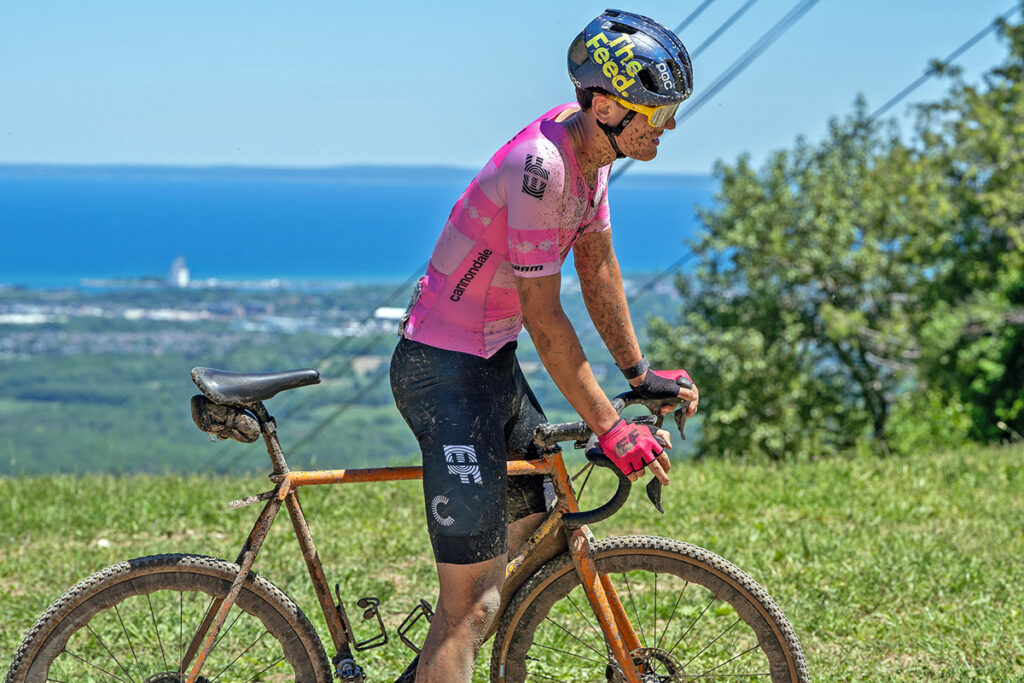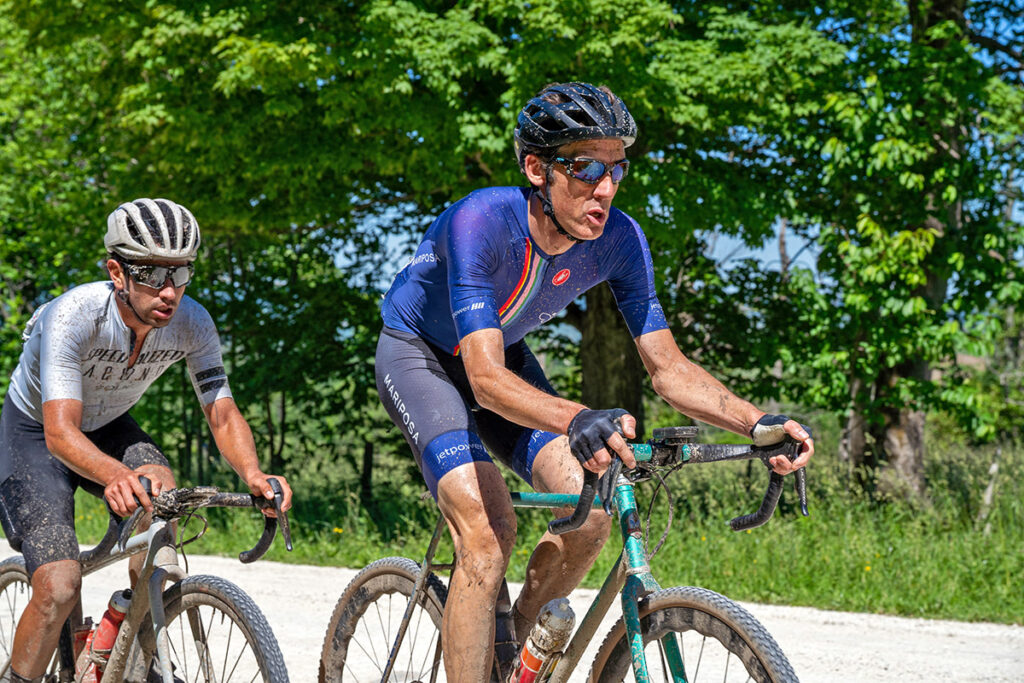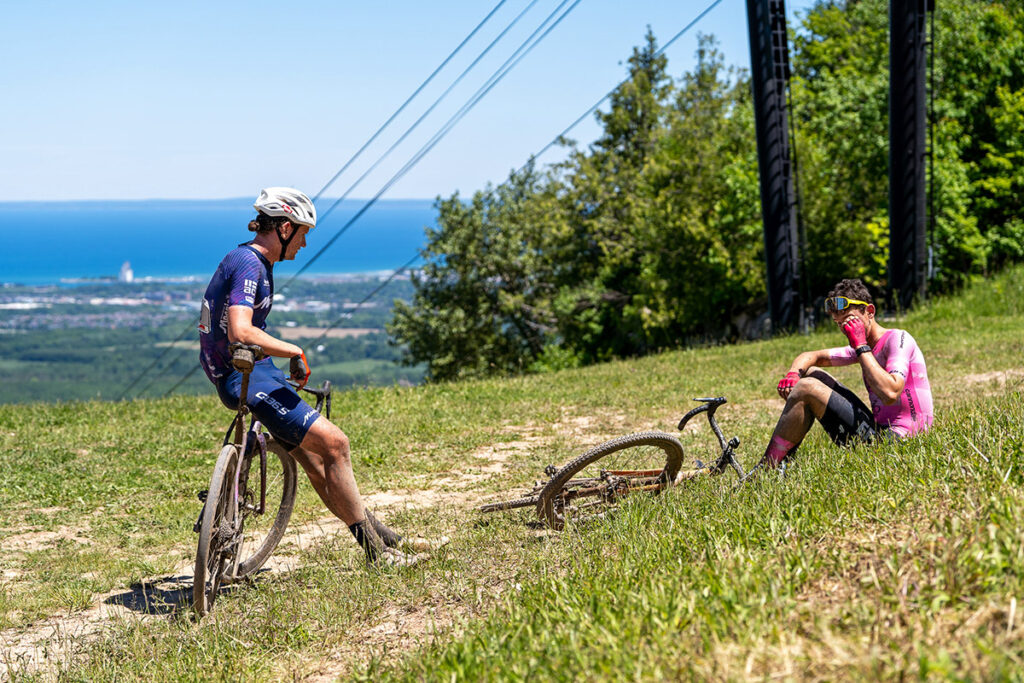Winning UCI Gravel on a Steel Frame
You don’t expect steel bikes to be ridden to the top steps of the podium in international races any longer these days, but that’s exactly what happened last weekend when the UCI Gravel World Series came to Collingwood in Ontario (Canada).

Blue Mountain Gravel was the last opportunity in North America to qualify directly for the UCI Gravel World Championships. In addition to the best racers from Canada, the race attracted some of the best racers from all over the world: Spain, England, the U.S., Colombia… It was a hard day or racing, on a challenging course that took the riders on a circuit up and over the escarpment, through a bog, and across some scenic gravel roads.

The men’s race was won by 16-year-old Ashlin Barry—on a steel bike (more about that later). Catching up with Ashlin after the race, he explained: “The race was awesome! It went as good as it could have for me. I was really happy with how I performed, and I had a super fun time out on the course. It was a hard, hilly, 120-km course with 3 laps of a circuit that contained a challenging and technical muddy section around 15 km from the finish line. I made all the front splits as the peloton slowly came apart. Then I attacked the final front group of three as we entered the last mud section. I went solo to the finish from there.”

He continued: “I chose to run the Rene Herse Steilacoom 700C x 38 mm tires, as I knew the mud section would be the most decisive point to win the race. I had used these tires earlier in the season and was surprised with how well they handled in mud for how fast they rolled on pavement. I opted for the 38 mm width as it allowed me to have far more clearance and not get bogged down by the mud. I had a strong feeling these would be the best tires for the race, and my course recon confirmed this.”

OK, Ashlin’s strategy and his tire choice are not really unexpected, but what about his bike? Steel bikes, and especially lugged steel, aren’t really something you see at the front of UCI races very often. Ashlin’s mount is a Mariposa all-road bike, built by his father Michael Barry. Ashlin tells the story: “The frame is a mixture of Columbus Spirit and Kaisei OS tubing (top and down tube are Kaisei). The bike was made in 2018, and I have won several gravel races on it. It was originally my dad’s bike. The bike he rode on Saturday is virtually the same, but it was built with Columbus Spirit tubing in 2015, before Kaisei tubes became available in North America. Both bikes have many many kilometers and races on them, but they remain some of the most comfortable, versatile and quickest bikes we’ve ridden.”

Michael Barry, Ashlin’s father and former UCI Pro Tour racer, finished 11th at Blue Mountain Gravel on a similar bike (with the same tires). I asked him why he prefers steel bikes, and he replied: “Steel is not only resilient, but also absorbs the road vibrations better than many other materials, so overall the frames are more comfortable. They also handle very well. A year after retiring from professional racing, I made a steel frame that had the same dimensions, wheels and parts as my last race bike, which was carbon. I took it to the Pyrenees for a few days and also rode some of my old training routes in Girona. The bike handled similarly, but I noticed that my body ached less after several hours, so over longer distances I was less fatigued.
“I also agree with your theories and tests on how a bike ‘planes’—the pedal stroke on a steel bike is more fluid due to the ’spring’ aspects of the material and therefore also more comfortable. If a frame is too stiff, I notice more of a dead spot at the bottom of the pedal stroke. On a lightweight steel bike the return of energy is notable, the bike more efficient, and the ride more enjoyable. For me, a steel frame with a well-built set of wheels that have little flex with supple tires is amazingly comfortable, quick and responsive.”

Third-place finisher Brennan Wertz (left) was also on a metal bike. His Mosaic is made from titanium. Brennan ran Rene Herse 700 x 44 mm Snoqualmie Pass Endurance tires in the race. However, the podium wasn’t all metal bikes: Second-place finisher Benjamin Perry appears to have raced on a carbon bike.
Back to Ashlin (right), he headed to Europe immediately after the race, where he will compete in two UCI junior road stage races. Later in the summer he will be racing in the Junior Track Cycling World Championships in Louyang, China, as well as the Junior Road & Time Trial World Championships in Zurich, Switzerland, towards the end of September.

More Information:
- Mariposa Bicycles was started by Ashlin’s grandfather, Mike Barry Sr., in 1969. Mike Barry Sr. was fond of epic cycling adventures in Europe. Mariposa was one of the first in North America to build complete randonneur bikes in the style of the French constructeurs, in addition to road, cyclocross and track frames. Today Mariposa Bicycles is run by Mike’s son Michael and Dede Demet Barry, herself a former professional cyclist whose palmarès include a silver medal at the 2004 Athens Olympics. Each frame is unique and custom-built by hand in Toronto (Canada). Their website is https://mariposabicycles.ca/
- Mosaic hand-crafts bikes from titanium and steel in Boulder (Colorado). Their website is https://www.mosaiccycles.com/
- In case you wonder about Ashlin’s jersey: He is sponsored by Cannondale on the road, but for non-team events—gravel and track racing—he is riding Mariposas.
- To find out what makes bicycles faster, more comfortable and more reliable, check out our book The All-Road Bike Revolution.
Photos by Jody Wilson



